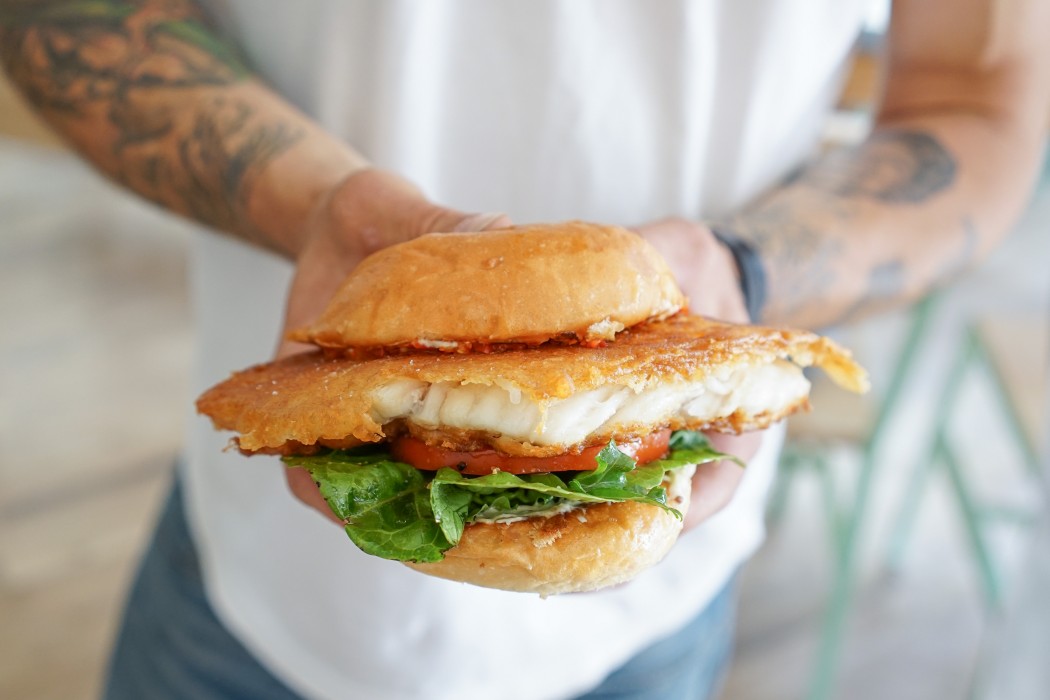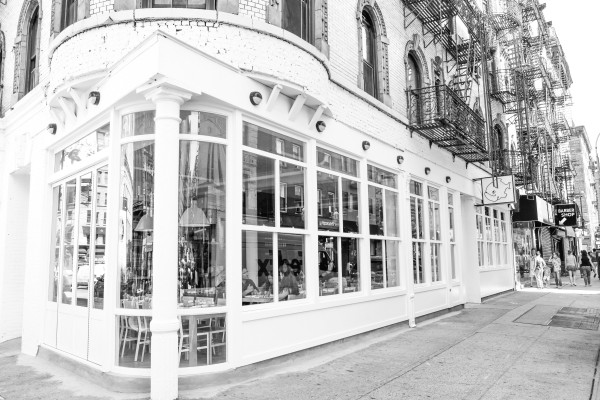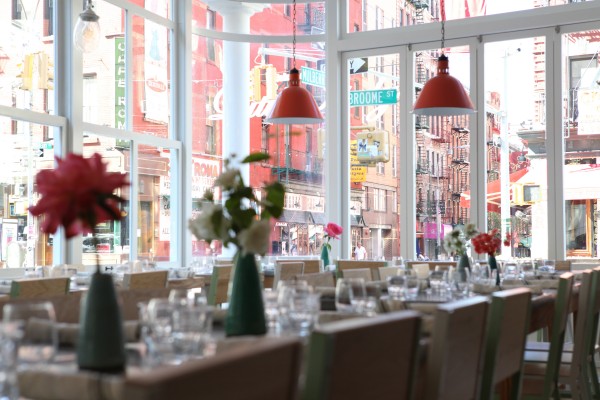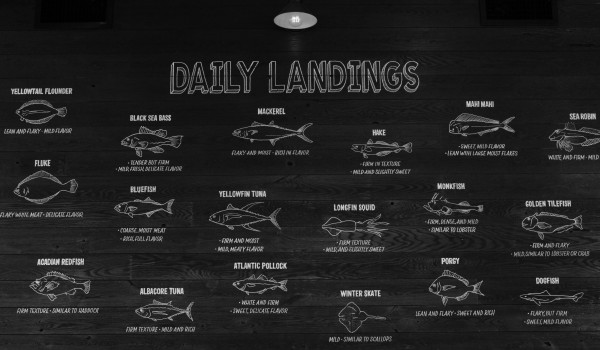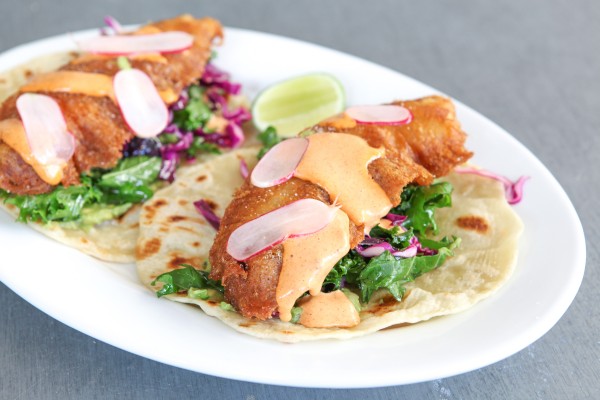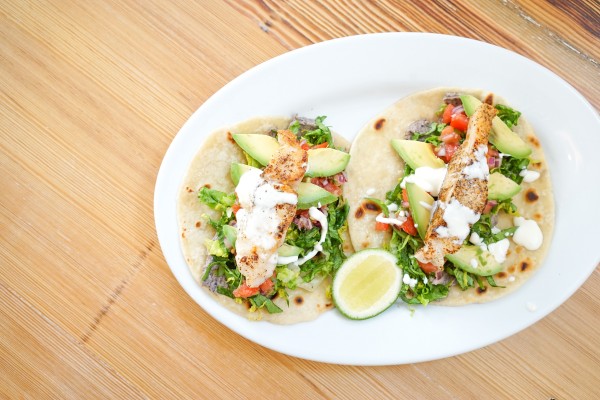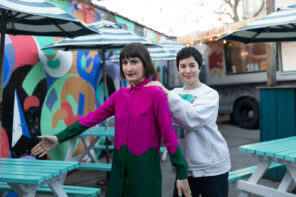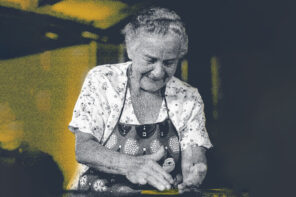Ok, here’s what people don’t know: the seafood industry is super f*cked up. Something like 90% of the fish you see—whether at the store, or in a restaurant—is mislabeled, claiming to be American red snapper when it’s actually unregulated, imported tilapia. To quote a 2014 op-ed from the New York Times, “It’s commonly accepted that seafood mislabeling is epidemic.”
Lucky for you — and your belly — there’s a new kid in (seafood) town, helping a class of sustainable, locally-sourced restaurants fight the good fight as best they can. Yes, we’re talking about Michael Chernow, well known co-founder of The Meatball Shop, who opened his first seafood restaurant, Seamore’s, in July of this year — just six years after his last adventure.
“We opened our first Meatball Shop in 2009,” Chernow says. “With the goal of being as local and sustainable as possible. For example, we try to work with one farmer — Newtown Farms in West Kill, New York — whenever we can. We’ve always wanted to source locally, and to have close relationships with the people growing our food.”
It should come as no surprise that Chernow — who grew up fishing in Freeport, Long Island— was then inspired to apply that same method to seafood.
“I was born and raised in NYC,” he remembers. “And always loved fishing. Some of my best memories were taking the boat from South Street Seaport to go fishing for lingcod.”
It seems natural that a young boy fishing in and around Long Island should develop a penchant for local fish. We’re talking bluefish, fluke, flounder, porgy, skate and monkfish — the six most common, local species in these great waters. “The older I got, the less time I had to go fishing,” he explains. “But I wasn’t any less passionate about fish. For about five years, my diet was 80% fish, 20% meatballs.”
A diet that’s 20% meatballs? Sign us up! But okay, okay. We’re here to talk about fish.
“About three years ago, I had this dream of opening a killer fish taco joint,” he says. “Somewhere that only used local fish… Ultimately, however, the idea grew into something more.”
The result was Seamore’s, a casual, inexpensive seafood shrine dedicated to all the fish who swim from “Montauk to Maine.”
“In peak season, somewhere between 60% and 70% of our fish come from Long Island,” he explains. “Montauk, in particular, is a focus. Because I feel like people in New York City are, for the most part, familiar with Montauk — it has a built-in brand name.”
So what did Chernow do next? “I actually posted an ‘ad’ on Twitter,” he remembers. “Asking for a local fishery that could help work Long Island fish into Seamore’s menu.”
Montauk resident, Sean Barrett, saw the Tweet. As co-founder of Dock to Dish — a 100% sustainably harvested fishery in Montauk—this was a literal match made in social media heaven.
“Sean has great relationships with the fishing community of Montauk,” Chernow explains. “And he supplies many leading restaurants in New York City — Gramercy Tavern and Blue Hill, to name a few. So when he Tweeted back and said, ‘I want to be your guy,’ it was a no brainer.”
And although restricting Seamore’s supply chain to the Eastern Seaboard has limited their menu to some extent, he doesn’t see it that way. Don’t think he’s aching to throw a trendy cool black cod on the menu.
“People don’t realize how many great fish species swim in our backyard,” he emphasizes, his voice ticking up a notch. “It’s just that people don’t know those fish, so they’ll default to something with a brand name. That’s why I’m so excited to serve underutilized species — like dogfish and acadian redfish — to Seamore’s. They’re just as delicious as salmon, halibut, tuna and cod… they just don’t get as much exposure.”
It’s a win-win-win situation: We, as Seamore’s diners, get to try all kinds of new, yummy fish, and they get to maintain a small carbon footprint. And the fisherman get to sell huge amounts of their less popular fish (Not to mention, there’s no danger of overfishing — and potentially depleting — these abundant species).
“You haven’t seen happy until you’ve walked into a Montauk fishery and said, ‘We’ll take all the dogfish you have,” Cherow explains with a laugh. “Because no one is buying it.”
Which isn’t to say dogfish isn’t delicious. It’s dense, rich and delicious — the perfect addition to Seamore’s much talked about fish tacos. “No one has any idea what a dogfish tastes like,” he continues. “And yet, it’s the most popular item on our menu. We serve 300 plates of dogfish tacos a night… it’s my favorite dish at the restaurant.”
As with all things, however, the bottom line comes down to hard, cold cash. We’ll keep it simple: underutilized fish species, despite being super delicious, are cheap. And when a restaurant gets their supplies for cheap, they can sell them for cheap. (And you can afford that fourth mezcal old fashioned.)
“I love having a small carbon footprint,” Chernow explains. “And [we] really love supporting the local fishing community. But what do I love most of all? That Seamore’s is totally affordable.”
You see, Seamore’s is filling a gap in the market — the need for accessible, inexpensive seafood that keeps you coming back night after night.
“There’s no shortage of amazing seafood in New York City,” he says. “But there aren’t any places that are accessible enough for people to eat there three times a week. Seamore’s was built to be a cool place where you can get a great meal for $35, then come back and do it all again the next day. That’s really what we’re all about.”
Keep up with Michael and his restaurants via Instagram:
Article as featured in the NYC Issue of Whalebone Magazine.

